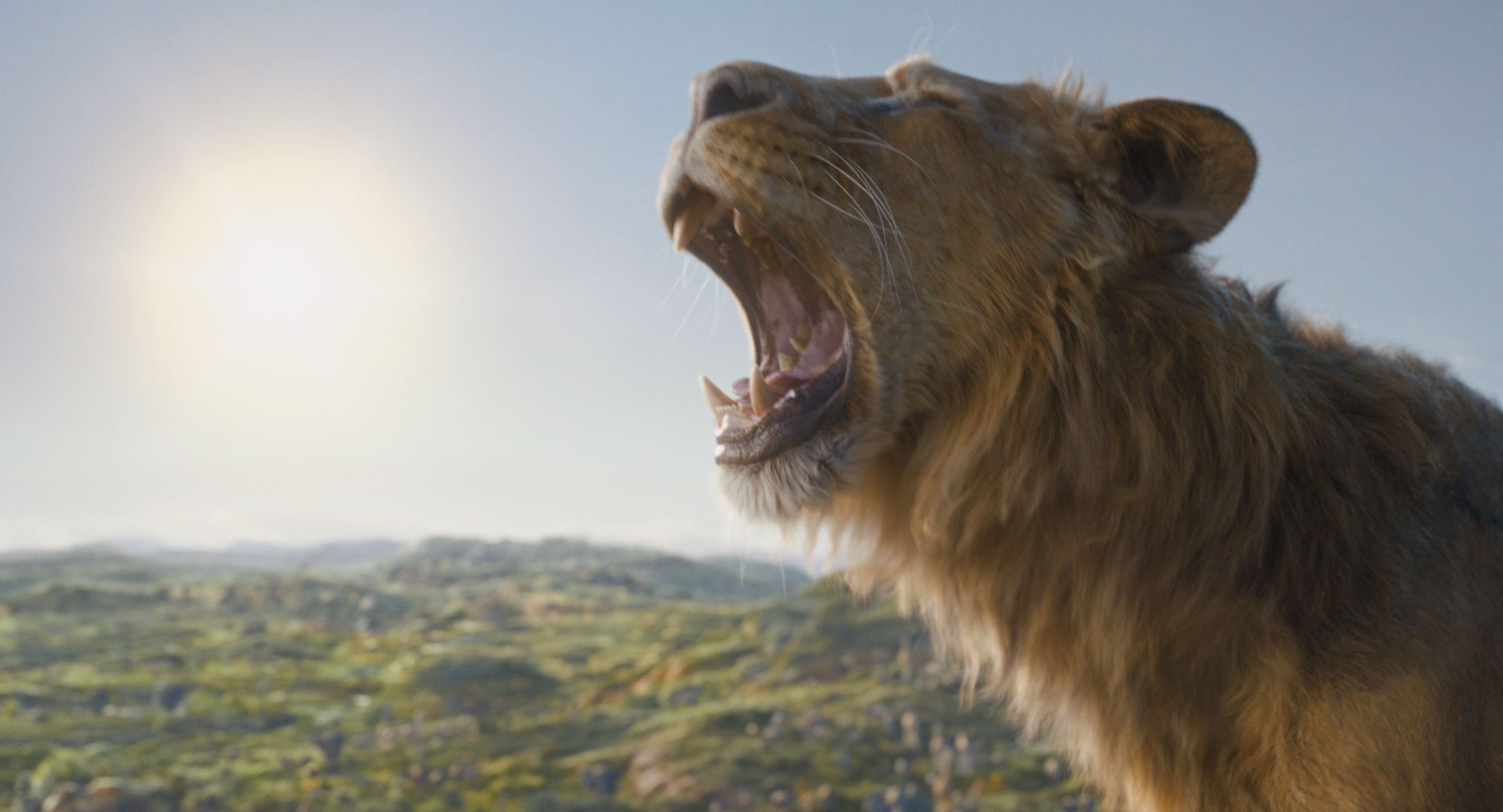‘Mufasa: The Lion King’ REVIEW: A Noble Journey to Pride Rock
‘Mufasa: The Lion King’ REVIEW: A Noble Journey to Pride Rock
Mufasa as a lion cub | Still courtesy of Disney
Mufasa: The Lion King tells the story of Mufasa and how he became the ruler of the Pride Lands. Mufasa is also popularly known as the father of Simba, whose journey we followed from the 1994 classic The Lion King. The film was set up as a story-telling session from the memories of Rafiki (John Kani) as the narrator, a mandrill who accompanied Mufasa on his adventure in their prime — alongside the comedic intervals of Timon the Meerkat and Pumba the Warthog (Billy Eichner and Seth Rogen, respectively) while looking out for Kiara (Blue Ivy Carter), child of Simba and Nala (Donald Glover and Beyoncé, respectively). As Simba accompanied Nala on the birthing grounds, Kiara was left in their care.
Rafiki telling Mufasa’s story to Kiara | Still courtesy of Disney
The story begins with a young lion cub, Mufasa (Aaron Pierre), traveling with his parents, Afia and Masego (Anika Noni Rose and Keith David, respectively), in hopes of reaching ‘Milele,’ which directly translates to ‘forever’ in Swahili. Reaching Milele means getting a chance at a better life, as life is scarce with the lion family’s current situation. Everything takes a huge turn as Mufasa gets caught in a flood that leads him away from his family and directs him to ‘Taka’ (Kelvin Harrison Jr.,) who rescues him from further demise.
He then meets Taka’s mother, Eshe (Thandiwe Newton), who stands as Mufasa’s adoptive mother. The two lion cubs form an instant brotherly bond and have become inseparable. From there, the story just does its best to make sense of how everything led up to the original The Lion King film — from how ‘Scar’ came to be, the meeting of Mufasa and other original side characters such as his future bride Sarabi (Tiffany Boone) and Zazu (Preston Nyman), and how he became the king of the Pride Lands.
Mufasa with his parents, Afia and Masego | Still courtesy of Disney
As a prequel, the film had the advantage over The Lion King's live-action remake from 2019, which suffered from being compared to its ‘original’ version. The criticism of The Lion King (2019) was its headstrong branding as a live-action remake, stripping away the magic that captivated the audience from the original 2D version. Disney was on what seems like a filmmaking spree, fixated on constantly releasing ‘retelling’ and ‘remake’ films from their roster of animated classics.
This prequel's National Geographic stylistic resemblement was toned down while maintaining a realistic-type animation enough to give it the live-action impression cohesive to the previously released remake. Also, the emotionless depiction of the animals is omitted, providing much more depth to the characters.
It may not make the cut for others’ liking, but they have undeniably improved on this aspect of animating ‘realistic animals.’ I couldn’t help but notice the real-life lion lifestyle, behavioral patterns, and manner of living integrated into the dynamic between the characters and the film's overall narrative. It was a splendid thing to witness — as someone who grew up watching Animal Planet as a kid.
This could be deemed unnecessary conceptually. Although inessential, the execution adds up to a good world-building experience and actually fits both the original 1994 original in terms of narrative and the 2019 remake in terms of visuals and structure. It effectively pays homage to its predecessor by using imagery, phrases, and similar scenes that encapsulate the essence of the original.
Mufasa, Rafiki, Taka, and Serabi (in order) overlooking the journey towards Milele | Still courtesy of Disney
Musicality-wise, Lin-Manuel Miranda's lead was evident, and all songs were fully realized. His affinity for writing is undeniable no matter how polarizing the public’s perception of him is. You will hear his signature inflections infused into the lyric delivery without losing the essence of the music, still fitting for the atmosphere of the entire film. He has the magic touch that was evident in his previous Disney projects such as the first Moana, Encanto, and The Little Mermaid live-action remake.
In terms of visuals, the colors significantly improved compared to the 2019 live-action that preceded it. I found the forerunner film drab and dull, which is a symptom of the aforementioned live-action branding, and leaning towards the stereotypical look for African countries and the generic savannah look on film. The vibrancy scale went up while still maintaining the essence of what a savannah should look like.
Kiros, the leader of a pack of white lions called ‘The Outsiders’ | Still courtesy of Disney
You can see some hints of progressive messages at particular angles you can take from the film — such as feminism and gender equality as Mufasa develops his skills from the lionesses whose role is hunters, rejecting the norm of how male lions naturally lie around only until an enemy strikes, and from Mufasa’s grand gesture to unify all the animals for a single goal of defeating ‘The Outsiders’ who dares to ruin ‘The Circle of Life.’
As for marketability, this latest Lion King installment strikes a nice balance between nostalgia for the adult audience who witnessed the animated film back then and modern enough to stand as its own body of work for the younger audience.
The film’s overall message is straightforward yet open enough for discussion — if you’re really up for the grueling task of dissecting it, such as possibly pointing out plot holes or debating how canon it is to its derivative film. It is also evident that the film is designed to be family-friendly, as it conveys the importance of family, knowing one’s history and learning from the experiences of those who came before, the value of community, and understanding one’s worth.
Mufasa’s first roar on top of the Pride Rock | Still courtesy of Disney
Barry Jenkins really tightened up the pacing of the film, which was perfect for a younger demographic and a family audience. It feels hasty in some parts and underdeveloped initially, but this is easily forgiven, given how the film turned out overall. The action sequences are exciting, enough to keep me invested and even gripping my seat at certain points in the movie. It had wonderful and momentous Easter eggs to warm the hearts of fans of the classic The Lion King, yet it wasn’t pigeonholed into being a nostalgia-marketed film.



















